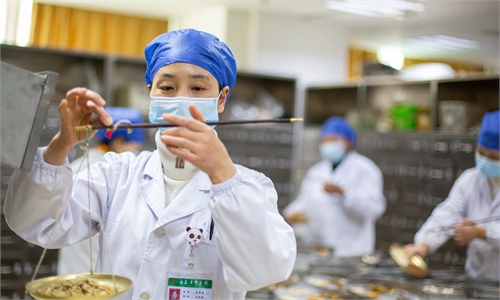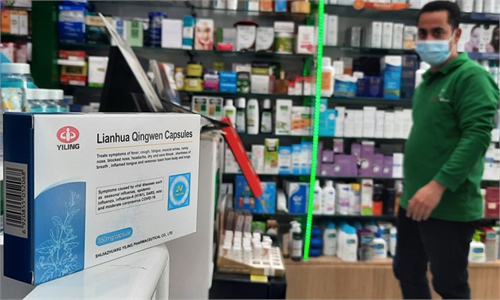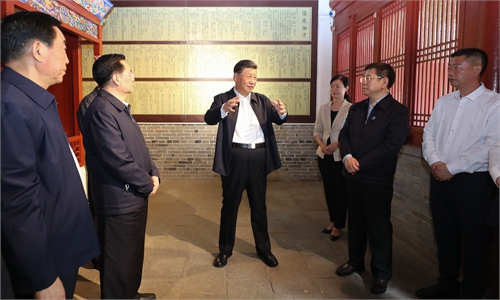Sales of mugwort products are surging as traditional Chinese medicines shine in aiding fight against coronavirus

Students from China University of Petroleum experience traditional Chinese medicine (TCM) culture at the TCM cultural base in Traditional Chinese medical hospital of Huangdao District, Qingdao, east China's Shandong Province, April 23, 2021. (Photo: Xinhua)
Sales of traditional Chinese medicine (TCM) mugwort products rose quickly on Thursday, with one company posting a 40-percent jump, after Chinese President Xi Jinping's visit to Nanyang, Central China's Henan Province, the country's biggest mugwort production base, on Wednesday.
"Since mid-night on Wednesday there have been clients outside Nanyang making appointments to visit our factory," Song Xin, president of XianCaoHealth Group Co, a Nanyang-based leading mugwort enterprise, told the Global Times on Thursday.
He said that the company's revenue had soared by 40 percent as of 3 pm on Thursday.
"The development of the mugwort industry has definitely gotten a boost from the visit," Song said, noting that the industry has entered the fast lane and will rise to a higher level.
It's a small part of the TCM sector that isn't so famous overseas, but Nanyang's mugwort industry provides about half of China's mugwort products, and it even played a role during the anti-pandemic drive for disinfection use.
"[The industry developed] too fast. The capacity of our factories can't meet surging market demand," Song said.
Over 11 years, the former small family workshop has grown into a large enterprise that has more than 1,000 employees, and the output value of mugwort products alone reached 350 million yuan ($54.25 million) a year.
He said that the turning point of the domestic mugwort industry was in 2014, when the domestic market reacted to the popularization of TCM. Song said that the company's mugwort products are mainly exported to Japan and South Korea for beauty salons and TCM stores, and their products were sold to more domestic and foreign clients amid the pandemic.
Since Alibaba resumed the Spring Bud Project in April 2020, when the COVID-19 pandemic was ravaging many countries, exports of Nanyang-made mugwort products have grown 50 percent year-on-year.
They are sold to more than 80 countries and regions, data from Tmall International showed.
Wei Yuezhi, chairman of Nanyang Hao Xiang Pharmaceutical Co and the Nanyang Wanai Industry Association, told the Global Times that the output of Nanyang's mugwort industry reached about 12 billion yuan in 2020, involving more than 3,000 enterprises and hundreds of thousands of farmers all along the industry chain.
With booming e-commerce, many enterprises launched online stores to expand their sales channels. There are more than 100 enterprises selling mugwort products on e-commerce platform JD.com, covering a variety of goods including moxa patches and moxa sticks.
In 2020, sales of mugwort products on JD.com soared by more than 100 percent year-on-year, with sales of moxa patches alone rising more than three times.
Song said that mugwort products are gaining popularity among young people, a trend that injects vitality into the consumer group of this traditional Chinese medicine therapy.
"The portion of customers aged between 25 and 35 has significantly increased from around 10 percent to 30 percent since 2019," he said.
"This is only a start," Wei said. He estimated that the sector would have a market scale of "hundreds of billions of yuan" within five to 10 years, and the industry chain would be more specialized and diversified.
According to an industry development plan drawn up by the local government, Nanyang aims to expand the mugwort planting area to 350,000 mu (23,333 hectares) by 2023, with output expanding by 50 percent.
By then, there will be 100 mugwort enterprises whose output value will reach 50 million yuan, and five enterprises with output values hitting over 100 million yuan. The city's overall output value of the industry is projected to exceed 30 billion yuan.



